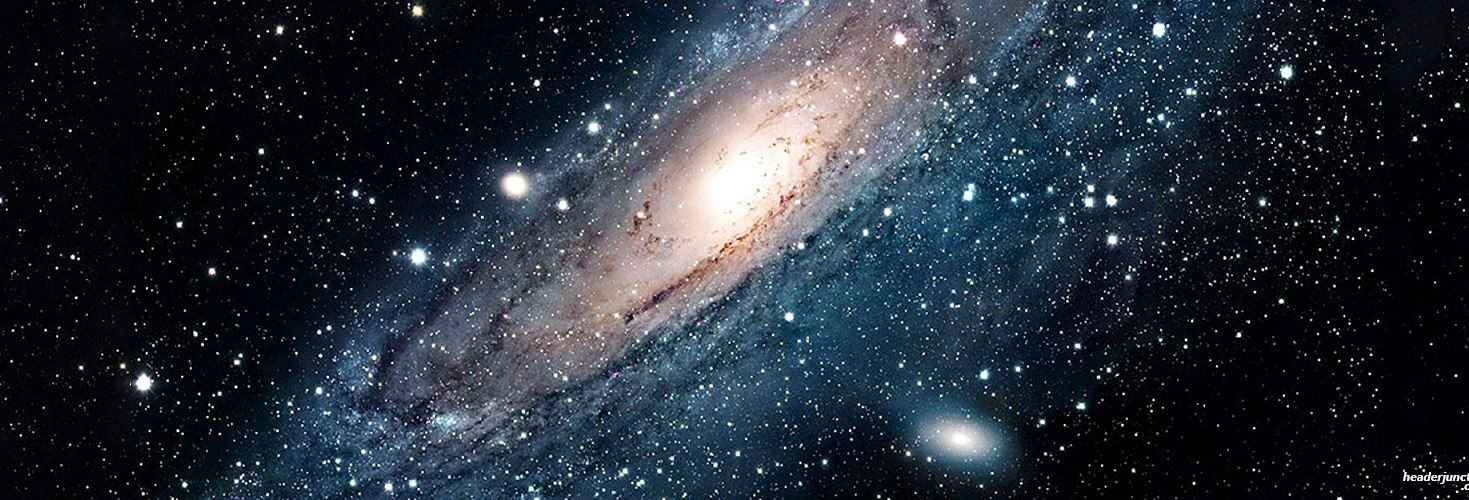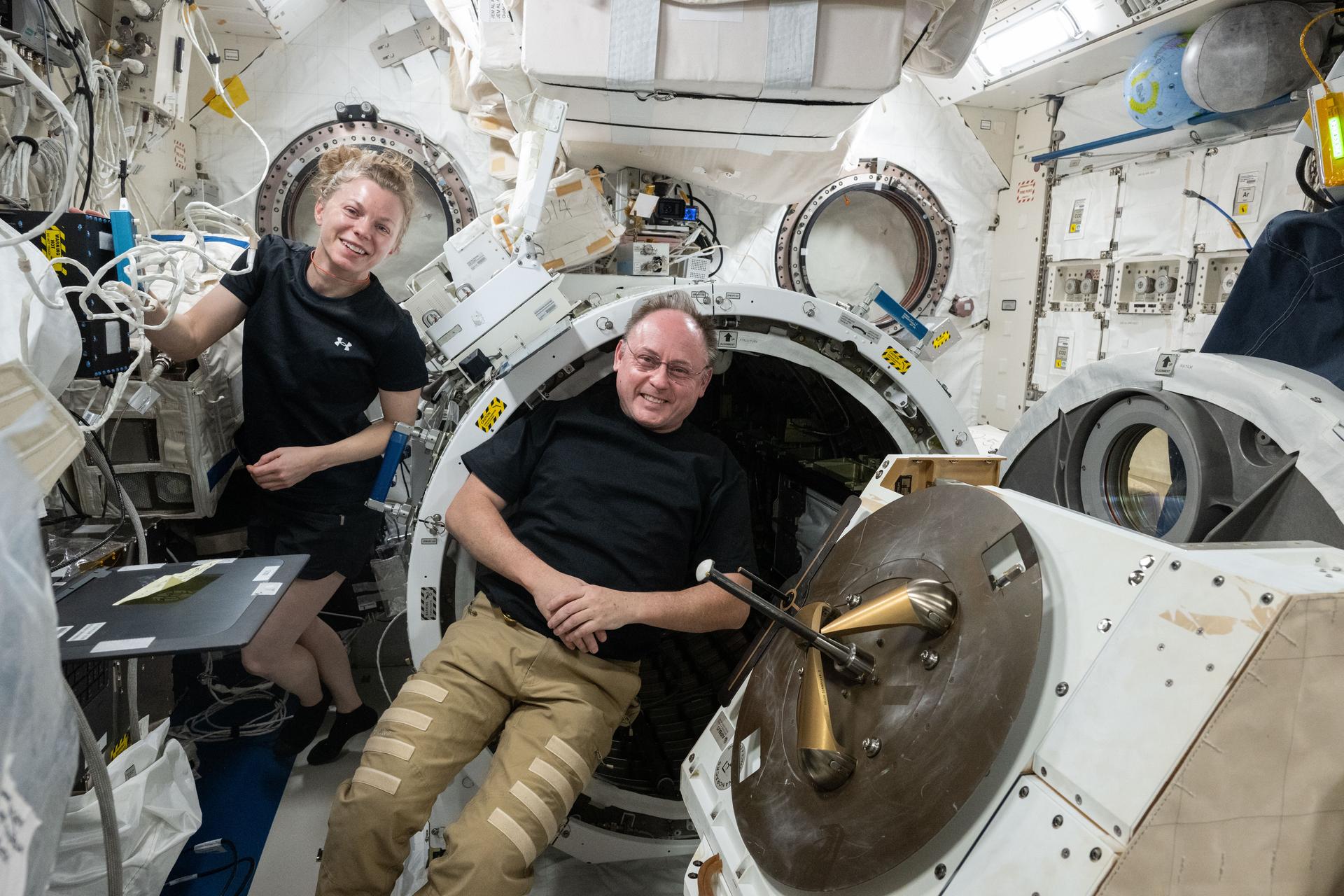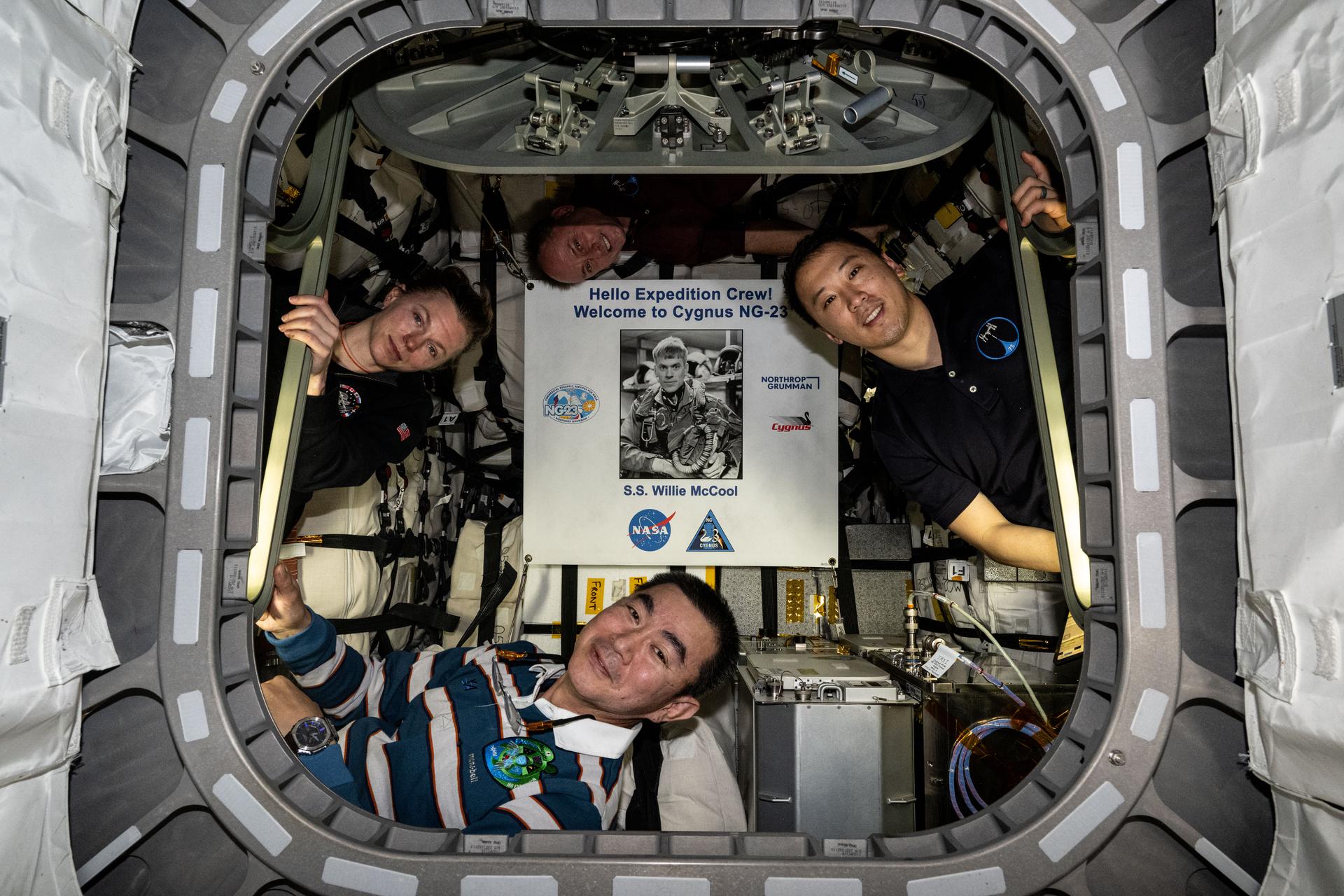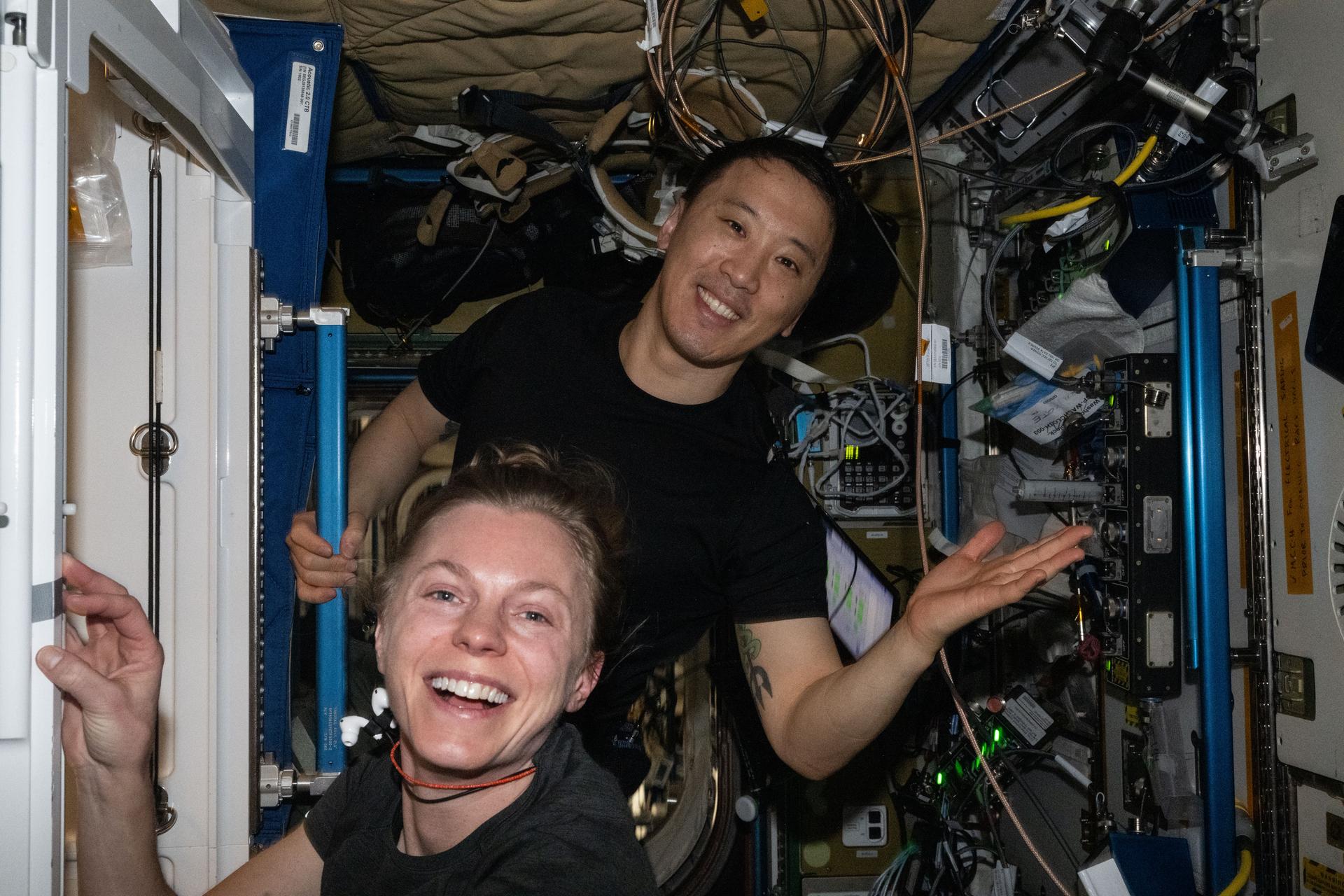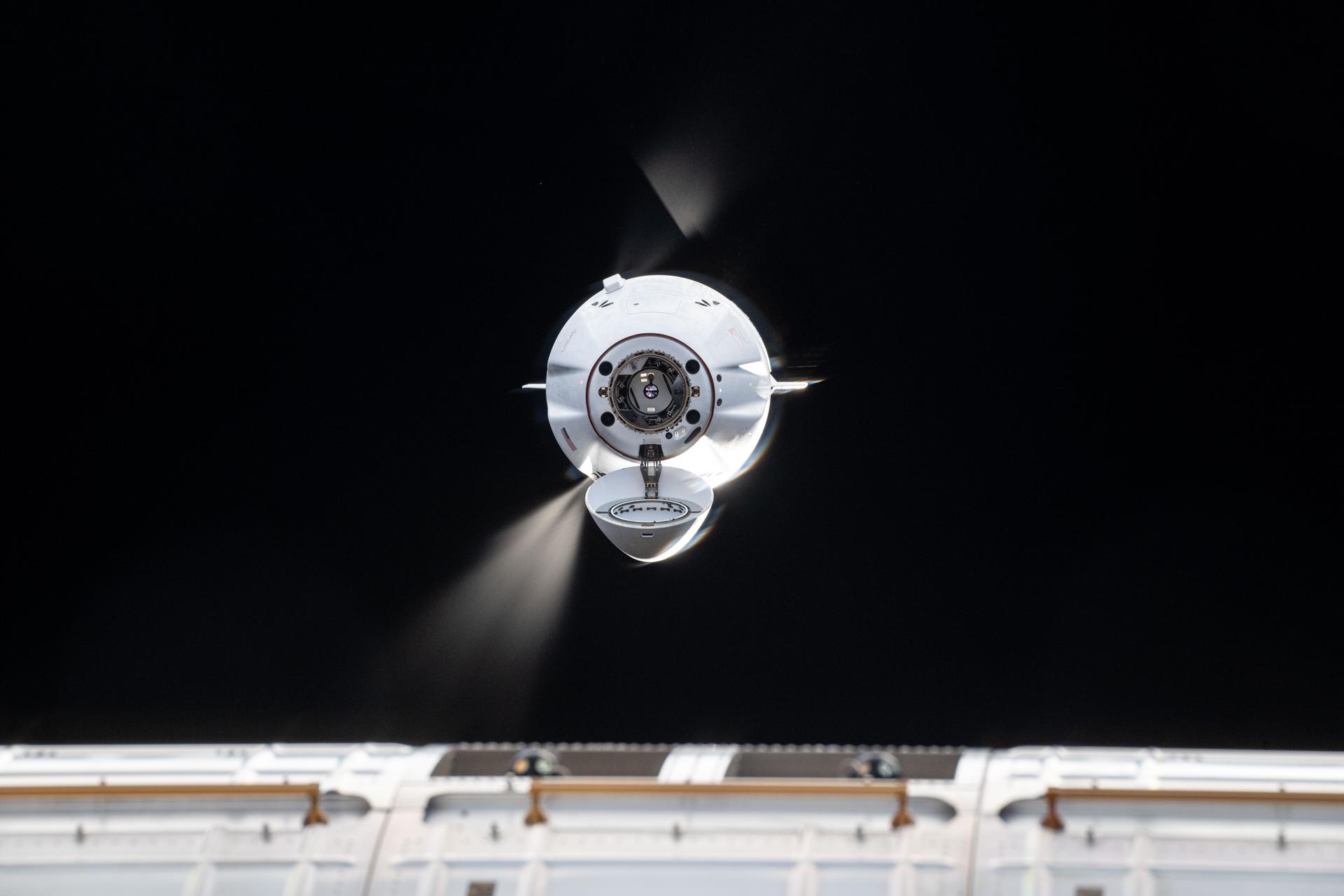Crew Works Advanced Science Hardware and Conducts Lab Inspections
Space science hardware once again topped the schedule for the Expedition 73 crew aboard the International Space Station on Tuesday. Life support and electronics maintenance to keep the orbital outpost in tip-top shape filled the rest of the day for the space lab residents.
Spacecraft humidity removal gear and ultra-high temperature physics were the focus for Flight Engineers Jonny Kim of NASA and Kimiya Yui of JAXA (Japan Aerospace Exploration Agency). Kim installed and activated a new technology demonstration in the Harmony module testing the removal of moisture from a spacecraft’s environment for recycling. Results may advance regenerative life support systems on future missions to the Moon, Mars, and beyond such due to the inability to resupply crews living and working farther away from Earth. Yui worked in the Kibo laboratory module on the Electrostatic Levitation Furnace (ELF) processing samples inside the experimental device. ELF uses lasers to safely heat materials to ultra-high temperatures as sensors and cameras measure thermophysical properties difficult to obtain in Earth’s gravity.
NASA Flight Engineer Mike Fincke installed the new Heat Transfer Host 2 fluid physics research hardware inside the Columbus laboratory module. The advanced gear will look at two-phase heat transfer, or condensation when gas turns to liquid, potentially leading to the design of advanced thermal systems for spacecraft carrying humans on deep space missions.
NASA Flight Engineer Zena Cardman spent her day primarily on life support maintenance first transferring fluids inside the Destiny laboratory module. Afterward, she collected airflow measurements and inspected ventilation systems throughout the space station’s U.S. segment with assistance from Kim. Finally, Cardman inspected cables and insulation for signs of corrosion and degradation in the Unity and Harmony modules. At the beginning of her shift, Cardman spent a few minutes swapping samples cassettes inside the Advanced Sample Experiment Processor-4 for an experiment investigating how to manufacture pharmaceuticals off the Earth.
Station Commander Sergey Ryzhikov of Roscosmos spent most of his shift replacing power supply components inside the Zarya module. He wrapped up his day jogging on the Zvezda service module’s treadmill for a regularly scheduled space fitness test. Flight Engineer Alexey Zubritsky concentrated on maintenance throughout Tuesday servicing the Elektron oxygen generator in Zvezda and conducting the yearly inspection inside the Roscosmos segment’s modules for moisture, corrosion, or damage. Flight Engineer Oleg Platonov explored how blood circulates to the microcirculatory system, the smallest blood vessels, in a crew member’s limbs using specialized blood pressure cuffs and electrodes.
Powered by WPeMatico
Mark A. Garcia
